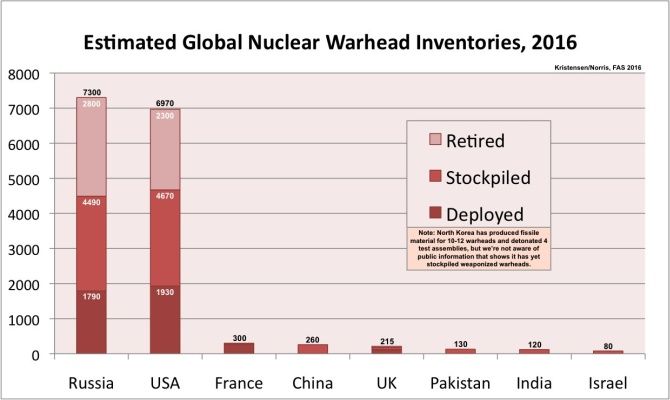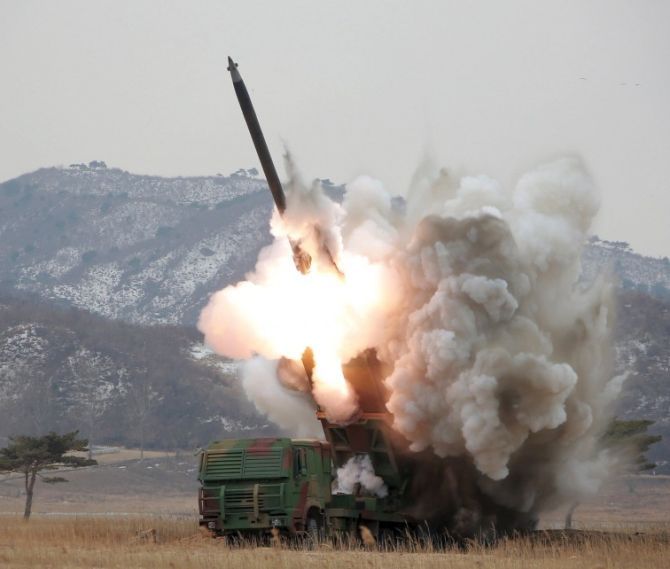 More than two dozen countries in the world have nuclear power, but only a few have nuclear weapons or are suspected of pursuing nuclear weapons, a latest report by the Federation of American Scientists has revealed.
More than two dozen countries in the world have nuclear power, but only a few have nuclear weapons or are suspected of pursuing nuclear weapons, a latest report by the Federation of American Scientists has revealed.
We bring forth to our readers the list of nations sitting on a nuclear stockpile, based on the study findings:
1) RUSSIA
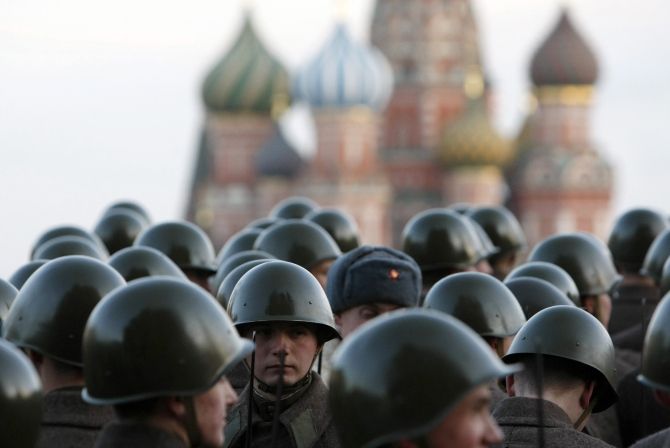
Estimated warheads: 7,300
Operational: 1,790
Reserve: 2,700
First test: 1949
Last test: 1990
Total tests: 715
In addition to the 4,490 in the military stockpile, an estimated 2,800 retired warheads are estimated to be awaiting dismantlement. Details are scarce, but Russia is dismantling approximately 500 retired warheads per year, according to the report.
2) United States

Estimated Warheads: 7,650
Operational: 2,150
Reserve: 2,500
First test: 1945
Most recent test: 1992
Total tests: 1,054
The US government declared in April 2015 that its stockpile included 4,717 warheads as of September 2014. Since then, a small number of warheads are thought to have been retired.
In addition to the roughly 4,670 warheads in the military stockpile, the US government in April 2015 announced that approximately 2,500 retired warheads at that time were awaiting dismantlement.
3) France
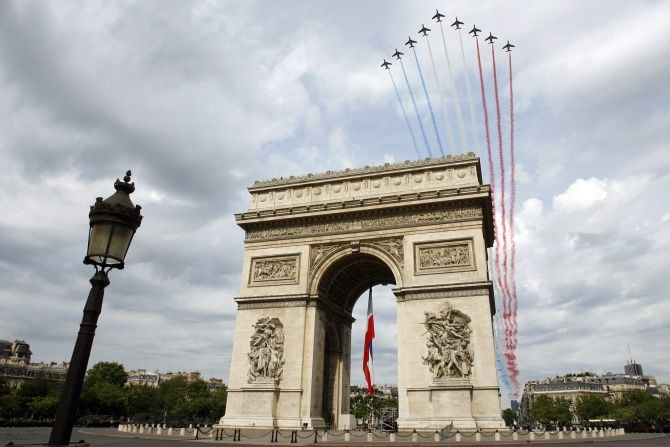
Estimated warheads: 300
Operational: 280
First test: 1960
Most recent test: 1996
Total tests: 210
Only weapons for France’s single aircraft carrier are not considered deployed, although it is possible that warhead loadings on some submarines missiles have been reduced.
It seems likely, however, that in addition to the operational stockpile of warheads deployed on ballistic missiles and in storage facilities with operational forces, a small number of additional warheads are present in the maintenance cycle of the industrial complex either as new warheads, warheads undergoing repairs, or retired warheads awaiting dismantlement, according to the report.
4) China
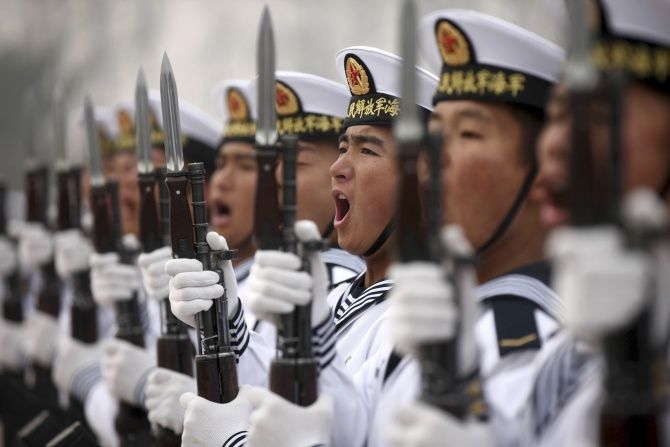
Estimated warheads: 260
Operational: Unknown
First test: 1964
Most recent test: 1996
Total tests: 45
China is thought to have “several hundred warheads,” far less than the 1,600-3,000 that have been suggested by some. None of the warheads are thought to be fully deployed but kept in storage under central control.
The existence of a Chinese non-strategic nuclear arsenal is uncertain. The Chinese arsenal is increasing with production of new warheads for DF-31/31A and JL-2 missiles.
5) United Kingdom
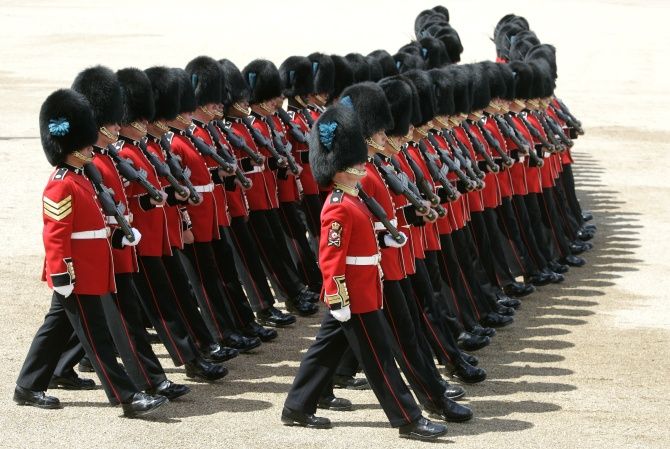
Estimated Warheads: 215
Operational: 120
Reserve: 95
First test: 1952
Most recent test: 1991
Total Tests: 45
The UK has lowered the number of warheads on submarines from 48 to 40. This has lowered the number of ‘operationally available’ warheads from 160 to 120.
By the mid-2020s, the stockpile will be reduced to ‘not more than 180’. This reduction is already underway.
6) Israel
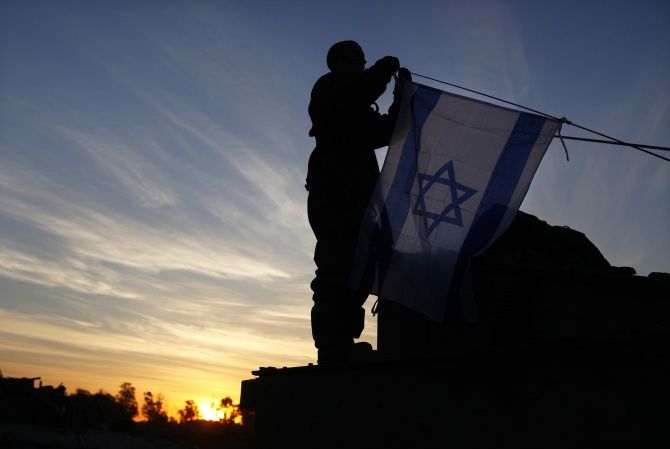
Estimated Warheads: 80
First test: No confirmed test
Most recent test: No confirmed test
Total tests: No confirmed test
Although the Israeli government neither confirms nor denies that it possesses nuclear weapons, it is generally accepted by friend and foe alike that Israel is a nuclear-armed state and has been so for nearly half a century.
Israel has produced enough plutonium for 100-200 warheads, but the number of delivery platforms and estimates made by the US intelligence community suggest that the stockpile might include approximately 80 warheads.
7) Pakistan
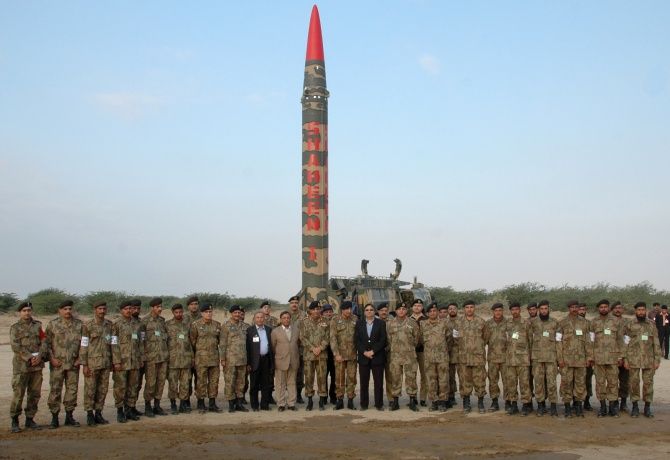
Estimated Warheads: 110-130
Operational: 0
First test: 1998
Most recent test: 1998
Total tests: 6
Pakistan has a nuclear weapons stockpile of 110 to 130 warheads, an increase from an estimated 90 to 110 warheads in 2011.
With several delivery systems in development, four operating plutonium production reactors, and uranium facilities, the country’s stockpile will likely increase over the next 10 years, but by how much will depend on many things. Two key factors will be how many nuclear-capable launchers Islamabad plans to deploy, and how much the Indian nuclear arsenal grows.
None of Pakistan’s warheads are thought to be deployed but kept in central storage, most in the southern parts of the country. More warheads are in production.
8) India
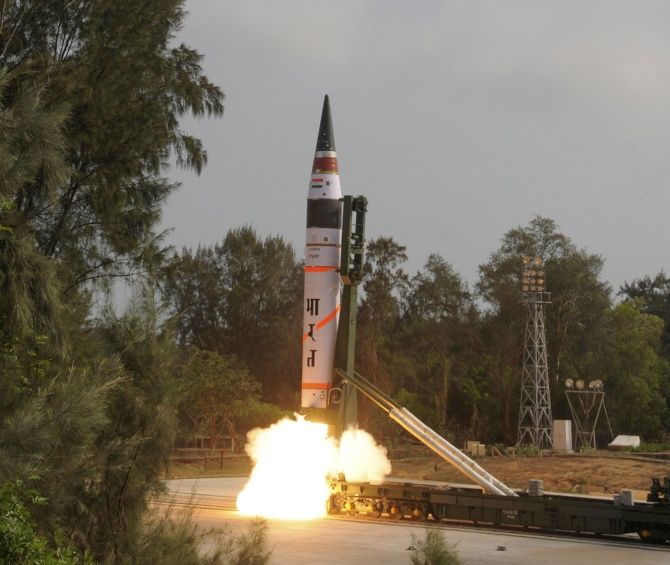
Estimated Warheads: 100-120
Operational: 0
First test: 1974
Most recent test: 1998
Total tests: 6
With several long-range ballistic missiles in development, the Indian nuclear posture is entering an important new phase. After nearly two decades of focusing on nuclear competition with Pakistan, New Delhi seems to now be paying attention to its future strategic relationship with China.
India is estimated to have produced approximately 540 kilograms of weapon-grade plutonium, enough for 135 to 180 nuclear warheads, though not all of that material is being used.
9) North Korea
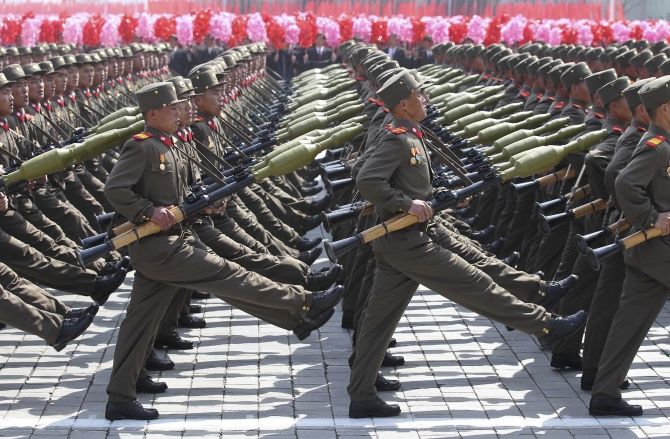
Estimated Warheads: Unknown
First test: 2006
Most recent test: January 6, 2016 (claimed)
Total tests: 3
Despite three North Korean nuclear tests, there is no publicly available evidence that North Korea has miniaturised and operationalised its nuclear weapons capability.
A 2013 world survey by the US Air Force National Air and Space Intelligence Center did not credit any of North Korea’s ballistic missiles with any nuclear capability.
Here's a chart that explains the the estimated nuclear warhead inventories
